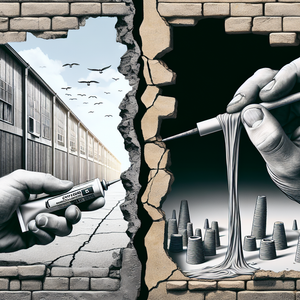Behind the Scenes: How Surveillance Shapes New York City

One of the most significant contributions of surveillance technology in New York City is its role in crime prevention. Advanced security systems, including CCTV cameras, motion detectors, and AI-powered analytics, are installed in various public and private spaces, from streets and parks to subway stations and commercial establishments. These systems serve as a deterrent to potential criminals, as the visible presence of cameras can discourage illicit activities. For example, the New York Police Department (NYPD) has integrated surveillance feeds from thousands of cameras across the city into its Real Time Crime Center. This enables officers to monitor incidents as they unfold, allowing for swift intervention. Reports indicate that neighborhoods with robust surveillance systems have seen a decrease in crime rates. In 2018, for instance, the NYPD reported a 15% reduction in crime in areas with extensive surveillance coverage, highlighting the efficacy of these technologies in protecting residents. Security surveillance companies, such as ADT Security Services, Verint Systems, and Honeywell, play a crucial role in providing the technology that supports these efforts. By equipping the city with state-of-the-art surveillance systems, these companies contribute to a safer urban environment.
Enhancing Urban Planning with Surveillance Data
Beyond crime prevention, surveillance data is increasingly being utilized in urban planning efforts. Security surveillance companies provide valuable insights into pedestrian traffic patterns, helping city planners make informed decisions about infrastructure development. Data collected from surveillance cameras can reveal peak foot traffic times in public spaces, guiding the placement of benches, lighting, and other amenities to enhance user experience. For instance, the NYC Department of Transportation (DOT) has utilized surveillance data to improve the design of public plazas and street layouts in busy areas like Times Square. By analyzing foot traffic patterns, planners have implemented changes that not only improve safety but also enhance the overall experience for pedestrians. Additionally, surveillance data can inform emergency response strategies. By understanding flow patterns during peak times, city officials can better prepare for potential emergencies, ensuring resources are allocated efficiently. This data-driven approach to urban planning exemplifies how surveillance can contribute to creating safer and more functional public spaces.
Public Perception of Surveillance in Urban Environments
Despite the benefits, the proliferation of surveillance technology in New York City raises important questions about privacy and civil liberties. Public perception of surveillance is often mixed; while many residents appreciate the safety and security that surveillance provides, others express concerns about being constantly monitored. A survey conducted by the New York Civil Liberties Union revealed that over 60% of New Yorkers are worried about the misuse of surveillance data and the potential for unwarranted government surveillance. Moreover, the racial and socioeconomic implications of surveillance cannot be overlooked. Critics argue that surveillance systems disproportionately target marginalized communities, leading to over-policing and systemic inequalities. For example, neighborhoods with a higher concentration of minority residents often experience more intensive surveillance, raising concerns about fairness and equity in law enforcement practices. Activist groups like Stop LAPD Spying Coalition have highlighted these issues, emphasizing the need for reform in how surveillance is deployed. As such, the conversation around surveillance in New York City is complex, requiring a balance between safety and privacy rights. Engaging community stakeholders in discussions about surveillance policies can help address these concerns and foster a sense of trust between the public and law enforcement agencies.
Surveillance technology undeniably shapes the daily lives of New Yorkers, influencing both crime prevention strategies and urban planning initiatives. While advancements in security surveillance have contributed to a safer environment, they also prompt critical discussions about privacy, civil liberties, and the ethical implications of monitoring citizens. As New York City continues to evolve, it is essential for stakeholders to engage in ongoing dialogue about the role of surveillance in urban life, ensuring that it serves the public good without compromising individual rights. By striking this balance, New York can harness the power of surveillance technology while fostering a community that values both safety and privacy. As the city navigates the challenges and opportunities presented by surveillance, it will be vital to consider not only the technological advancements but also the human impact of these systems, ensuring that the solutions implemented reflect the diverse needs and values of New York's dynamic population.
Surveillance Systems Technician
ADT Security Services, Honeywell, Verint Systems
Core Responsibilities
Install, maintain, and troubleshoot various surveillance equipment, including CCTV cameras and alarm systems.
Collaborate with law enforcement and security teams to ensure systems are integrated with real-time monitoring centers.
Conduct regular system checks and repairs to ensure optimal functionality and compliance with safety standards.
Required Skills
Proficiency in electronic systems and networking, with certifications like Electronic Security Technician (EST) preferred.
Strong problem-solving skills and attention to detail.
Familiarity with local regulations regarding surveillance and privacy.
Data Analyst for Urban Planning
NYC Department of Transportation, urban planning firms, municipal government agencies
Core Responsibilities
Analyze surveillance data to assess pedestrian traffic patterns and inform urban development decisions.
Create visual reports and presentations to communicate findings to city planners and stakeholders.
Collaborate with city departments to provide insights that enhance public safety and infrastructure planning.
Required Skills
Proficiency in data analysis software (e.g., Python, R, Tableau) and spatial analysis tools (e.g., GIS).
Strong analytical skills and the ability to interpret complex datasets.
Understanding of urban planning principles and community needs.
Privacy Compliance Officer
Government agencies, legal firms, privacy advocacy organizations
Core Responsibilities
Develop and implement policies to ensure compliance with privacy laws and regulations related to surveillance technologies.
Conduct regular audits of surveillance equipment and data handling practices to minimize risks of data misuse.
Serve as a liaison between the public, law enforcement, and city officials regarding privacy concerns connected to surveillance systems.
Required Skills
In-depth knowledge of privacy legislation (e.g., GDPR, CCPA) and ethical considerations in surveillance.
Strong communication skills to effectively address community concerns and explain compliance measures.
Experience in risk management or compliance roles, preferably in a public sector context.
Security Consultant
Security consulting firms, corporate security departments, law enforcement agencies
Core Responsibilities
Assess and recommend surveillance solutions tailored to the specific needs of businesses and public facilities.
Conduct threat assessments and develop security plans to mitigate risks associated with urban environments.
Stay updated on industry trends and emerging technologies to provide clients with cutting-edge solutions.
Required Skills
Experience in security system design and implementation, with certifications such as Certified Protection Professional (CPP) preferred.
Strong analytical and communication skills to effectively convey security strategies to clients.
Knowledge of local security regulations and best practices in surveillance.
Urban Safety Coordinator
Non-profit organizations, city government departments, community advocacy groups
Core Responsibilities
Develop community outreach programs focused on the benefits and implications of surveillance technology in urban areas.
Collaborate with local law enforcement and community organizations to address public concerns regarding surveillance.
Monitor and evaluate the effectiveness of surveillance initiatives in improving public safety and community trust.
Required Skills
Strong interpersonal and public speaking skills to engage with diverse community groups.
Knowledge of urban safety issues and familiarity with surveillance technologies.
Experience in project management or community organizing.


